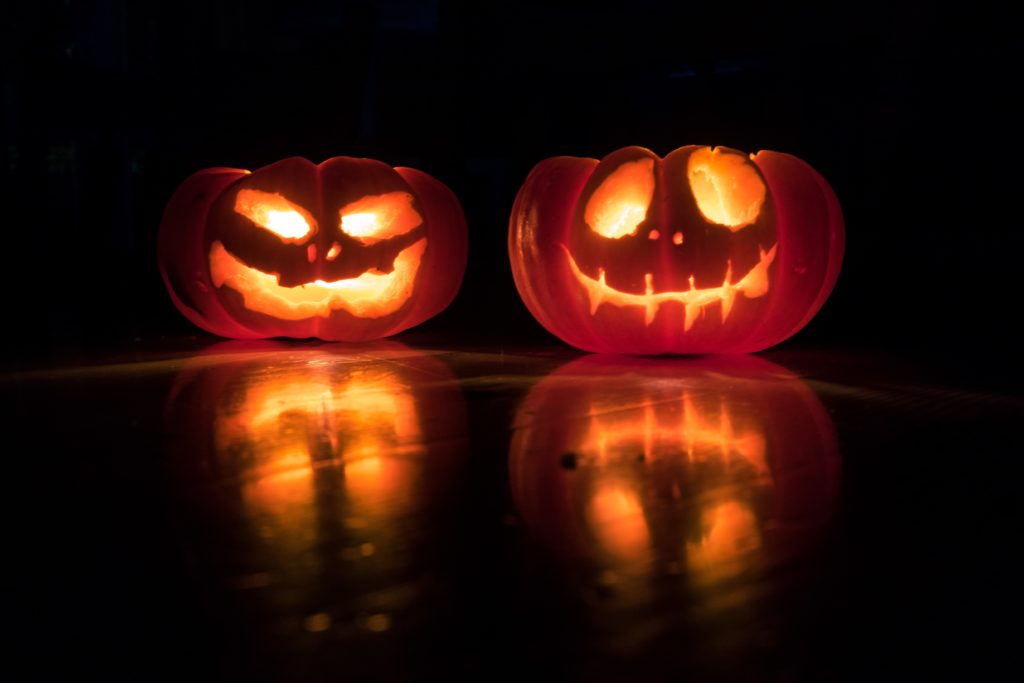And we thought the costumes were the scariest thing about Halloween! Dr Amy R Hackley, Senior Lecturer in Marketing in Birkbeck’s Department of Management explores the dark side of holiday consumerism.
As Halloween approaches, are you considering buying a pumpkin or two, and perhaps a plastic broom, make up or a horror mask for the kids to take trick or treating? Or even some Halloween-themed nightwear, or a special chocolate treat for yourself? Halloween consumption is on a rising trend: according to www.statistica.com, UK consumers are spending more than twice as much money on Halloween as we did in 2013, and an estimated 25% of us will buy a pumpkin, at a cost of around £30,000,000 (yes, that’s £30 million). Total Halloween related spending is estimated at almost half a billion pounds sterling annually. Last year, British supermarket chain Waitrose reported its biggest ever Halloween sales bonanza, with sales up by 62% on the previous year[i]. This year, in the home of Halloween consumption, the USA, pre-Halloween chocolate and confectionary sales have reached $324[ii] million, up by 48% comparing to the same period in 2020, with American consumers spending a stunning $10 billion every year on Halloween. But why do we spend such extraordinary sums on trivial items to mark an ancient Celtic death festival?
Halloween originated as the pagan festival of Samhain, part of the ancient Celtic religion in Britain and other parts of Europe. The Celts believed that on the 31st October the barrier between the world of humans and the world of spirits dissolves to allow ghosts to wander amongst us on earth. The festival was needed to scare away the bad spirits, and to remember the dead. Turnips were used to carve lanterns rather than pumpkins, and ‘guising’ (going from house to house in masks and costumes) was practised. Under the influence of Christianity, the day became known as All Hallows’ Eve or All Saint’s Eve. There are versions of this festival practiced around the world. For example, the Día de los Muertos or Day of the Dead in Mexico is celebrated in the 2017 Disney movie Coco, and across East Asia there are many versions of ghost festivals practiced, such as paper burning rituals of ancestor worship, the Hungry Ghost festivals in Singapore and the ‘Pee Ta Khon’ festival in Dan-sai district, Loei province, Thailand. All these ritual practices are marked by consumption of various kinds, of food, goods and services. Halloween gained its popularity in America when 19th century Irish immigrants brought it with them, and the influence of American TV shows, books and movies, made Halloween more and more popular in the 20th Century.
From an academic perspective, consumption is a rich site of ritual practices, and death-related ritual is one of the most powerful. Death rituals re-enact our symbolic connection with our existence. They give us opportunities to re-tell tell stories about life and death, and to connect with the spirit world from which we are separated. They help the living to move away from the brute fact of death towards an acceptance of death as a kind of continuity of life. In a way, Halloween and other ritual practices help the living to celebrate life, by ritualising death.
Of course, the spiritual side of death rituals is very well-hidden in today’s deeply commercialised consumer festival of Halloween. Although a lot of consumption is essential to the practice of death rituals, we really do not need to eat so much chocolate or to buy so many horror costumes. It is, really, a horror of wasteful consumption. Halloween costumes and decorations are made from cheap plastic and synthetic materials which are not so good for our environment. It was recorded that consumers created 2,000 tonnes of plastic waste by discarding Halloween costumes[iii], and an estimated 8 million pumpkins (or 18,000 tonnes of edible pumpkin flesh) are heading for the bin as consumers do not eat it[iv] But, when we are young, Halloween is an opportunity to party and have fun dressing up, trick or treating, eating a lot of chocolate and candy and, when we are older, perhaps drinking a lot of alcohol. What’s not to love? Most supermarkets have their own dedicated range of branded Halloween products because the event is a huge opportunity to make money by selling us overpriced stuff we do not need.
Halloween remains one of the world’s oldest holidays and death festivals, and in its many forms around the world it retains a rich cultural significance in human society. As the contemporary American author Andrew Delbanco notes in his book ‘The death of Satan: how Americans have lost the sense of evil’, he suggests that as we have lost touch with the idea of evil, we seem to need more vivid representations of it. The commercialisation of Halloween in the Western world helps us to affirm our sense of self and social identity and to reconcile us to the inevitability of death by making it seem like a harmless children’s cartoon. Yet, lurking beneath the millions of pounds worth of fake blood, carved pumpkins and discarded plastic witch hats, is a real horror story of reckless and unsustainable consumption.
[i] https://waitrose.pressarea.com/pressrelease/details/78/NEWS_13/12558 accessed 21/10.2021
[ii] “New Data Shows 2021 Halloween Chocolate and Candy Sales Are Up” Yahoo News Monday 18th October 2021 https://finance.yahoo.com/news/data-shows-2021-halloween-chocolate-173600801.html accessed 21/10/2021
[iii] https://www.telegraph.co.uk/news/2019/10/17/halloween-2019-costumes-will-create-2000-tonnes-plastic-waste/ (paywall)
[iv] https://www.theguardian.com/environment/2019/oct/23/pumpkin-waste-uk-halloween-lanterns

